Apples, and peaches, and pears, oh my! What to do with those wonderful fruit trees now that the weather is lovely enough to get some real work done in the garden? Fruit trees don’t need much major work in the fall, but there are some things you can do to make them weather the cold better.
As luck would have it, autumn is a great time to plant many fruit trees. If you’ve been thinking about adding one or more, you’ll be delighted to hear that you can start now. You don’t have to wait for spring!
Let’s discuss fall-planted fruit trees as well as what care to give your established ones. This is not a time to make any large-scale moves, but a little freshening up and support will keep them safe and sound through the winter.
Planting
I don’t want to spend too much time on planting, but I will briefly overview and link to extensive planting guides. These will give you all you need to know about the different types of trees.
The main thing to remember is to wait until the weather cools down. But don’t wait so long that your plant doesn’t have time to establish roots before a hard freeze. This time will vary depending on your zone.
In Zones 2 and 3, I recommend waiting until spring. It’s too late in the year to plant much of anything. In Zones 4 through 7, go ahead and get started in September or early October.
In Zone 8, you can likely start at the same time unless it’s a particularly hot year. Here in Zone 9 and south, it’s still pretty warm. You can hold off, but you should be able to plant in October as long as, again, it’s not uncommonly hot.
Tree roots grow best in soil above 50°F (10°C). The warm soil and cooler air in fall make it a surprisingly good time to plant many perennials and evergreens. When the plant isn’t stressed by the heat, its roots can grow well in that warm soil.
Some trees that are good to plant in autumn include:
- Citrus: Oranges, lemons, limes, and grapefruits are evergreen. They are sturdy and generally easy to care for.
- Stone Fruits: Plums, cherries, peaches, and apricots are gorgeous spring bloomers. Plant them in the fall, and you may enjoy some flowers the first year.
- Tropicals: Guava, papaya, kiwi, lychee, and avocado can all be planted in the fall in frost-free climates. This is ideal, as it gives them more time to adjust before the summer heat.
- Other Fruits: Apples, pears, figs, and really, most others you can think of are all good for fall planting. Just time it right for your climate, and they should be fine.
General Planting Guidelines:
- Dig a hole as deep as the root ball and three times as wide. This loosens the soil, facilitating root development. Soak the root ball before planting to make the roots flexible and reduce transplanting stress.
- If you find it is root-bound, gently loosen the roots. Position the tree in the prepared hole so that the root ball lies at the surface of the surrounding soil. Don’t bury the trunk; it should be right on top of the soil or slightly raised. If you’re transplanting a bare root tree, keep the graft a few inches above the soil surface.
- Backfill the hole with native soil and any amendments you choose to add. Compost or manure will break down over the winter and boost nutrients when the tree comes out of dormancy.
- Water your newly planted tree deeply to encourage deep roots, soaking the ground. Add a thick layer of mulch on top, leaving about two inches between the mulch and the trunk. Stake the tree for support, and then water daily for two weeks, gradually decreasing frequency until the tree begins to go dormant.
Established Fruit Tree Care
Let’s move on and look at those established fruit trees. They need some love in the fall, but not so much that they think they should start putting on a lot of growth. New growth is more vulnerable to frost, so we want to minimize that.
Watering
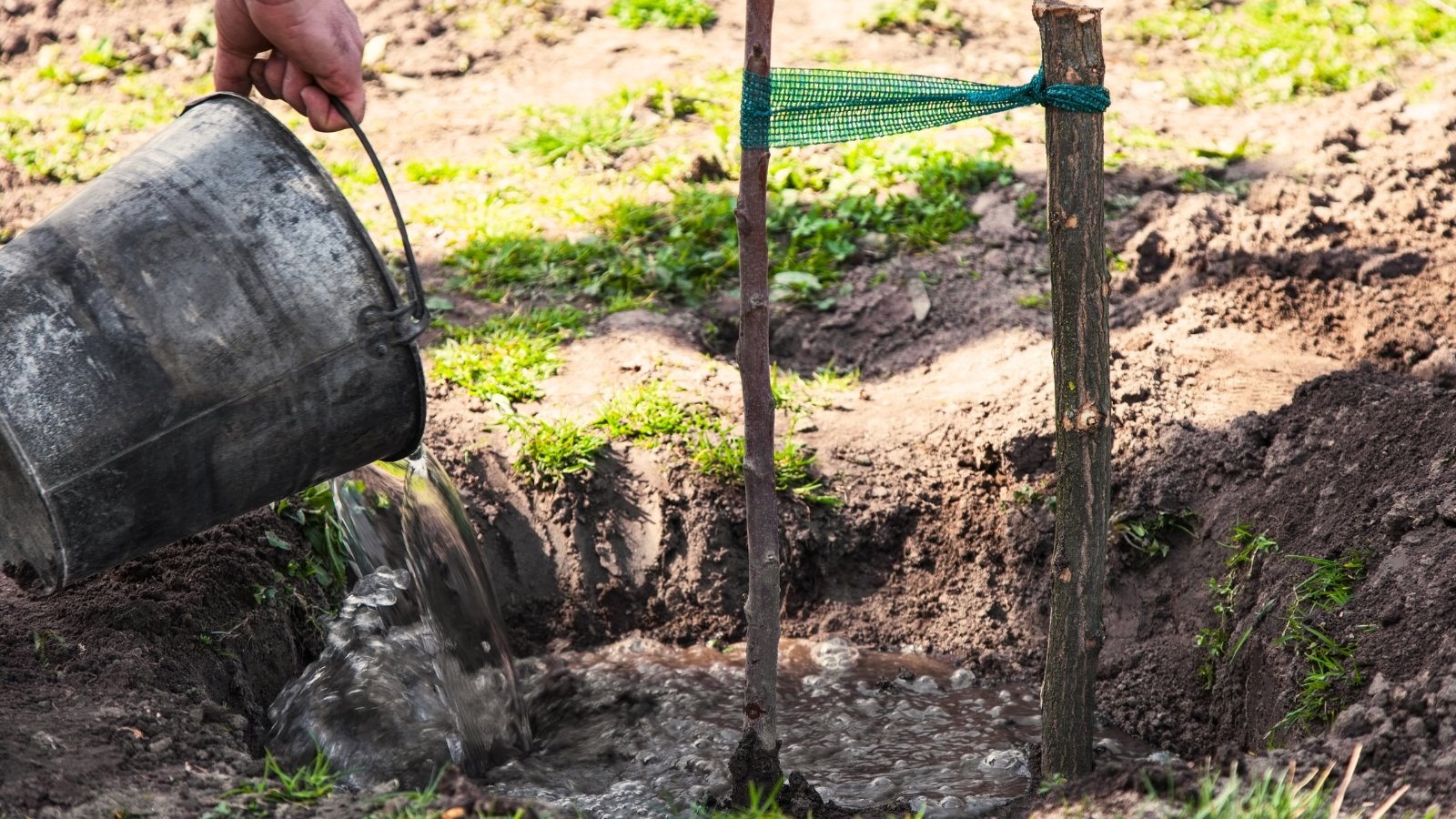
You should slow down watering fruit trees in early fall except for newly planted trees. Watering increases growth, and that new growth is susceptible to frost damage. Autumn is usually a rainy season anyway, so let the rain do the watering and take a break for yourself.
Once the leaves drop and it goes dormant, water the ground around the trunk deeply. This will encourage root growth, making it stronger during the winter. If your winter has snap freezes, attempt to water deeply ahead of the freeze to insulate the roots. In winter, trees can go four to six weeks without water, so you won’t need to worry about watering as much then.
Harvesting
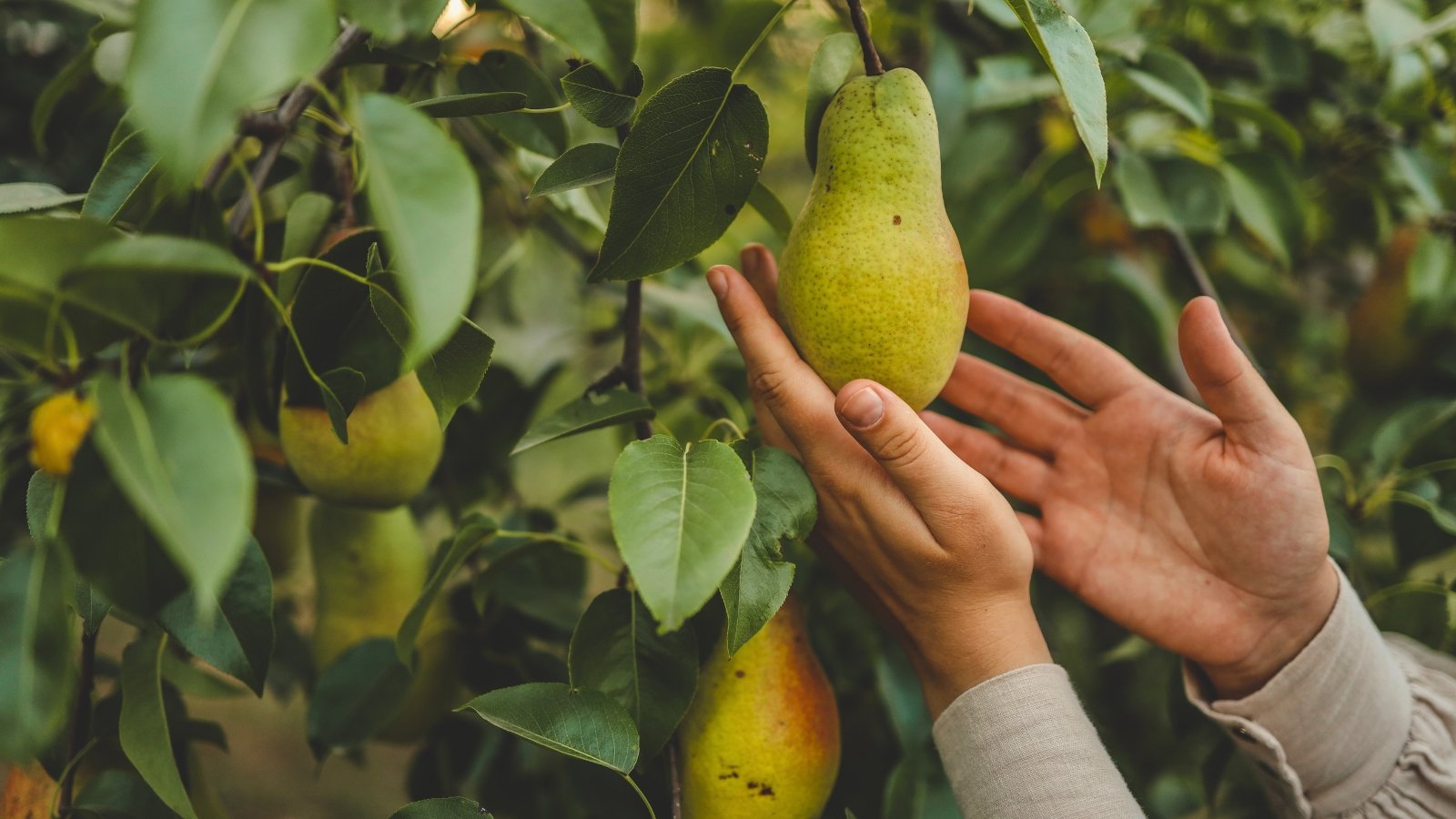
Depending on the type of tree, you could be approaching harvest time. Apples, pears, figs, and persimmons, to name a few, should be getting nearing ripeness if they’re not already.
Most fruits will come away from the branch easily when they are ripe, but some require removal with sanitized shears. Determine which kind of tree you’re working with. Pears are ready to harvest when the neck has just a slight give. Before picking figs, let them reach their ripe color.
Persimmons will soften slightly when they are ripe. Citrus fruits typically ripen in the winter, and a pair of hand shears can be handy. Several types of ripe fruit will stay fresh longer if you keep them in the refrigerator, but some types do best when stored at room temperature.
Cleanup
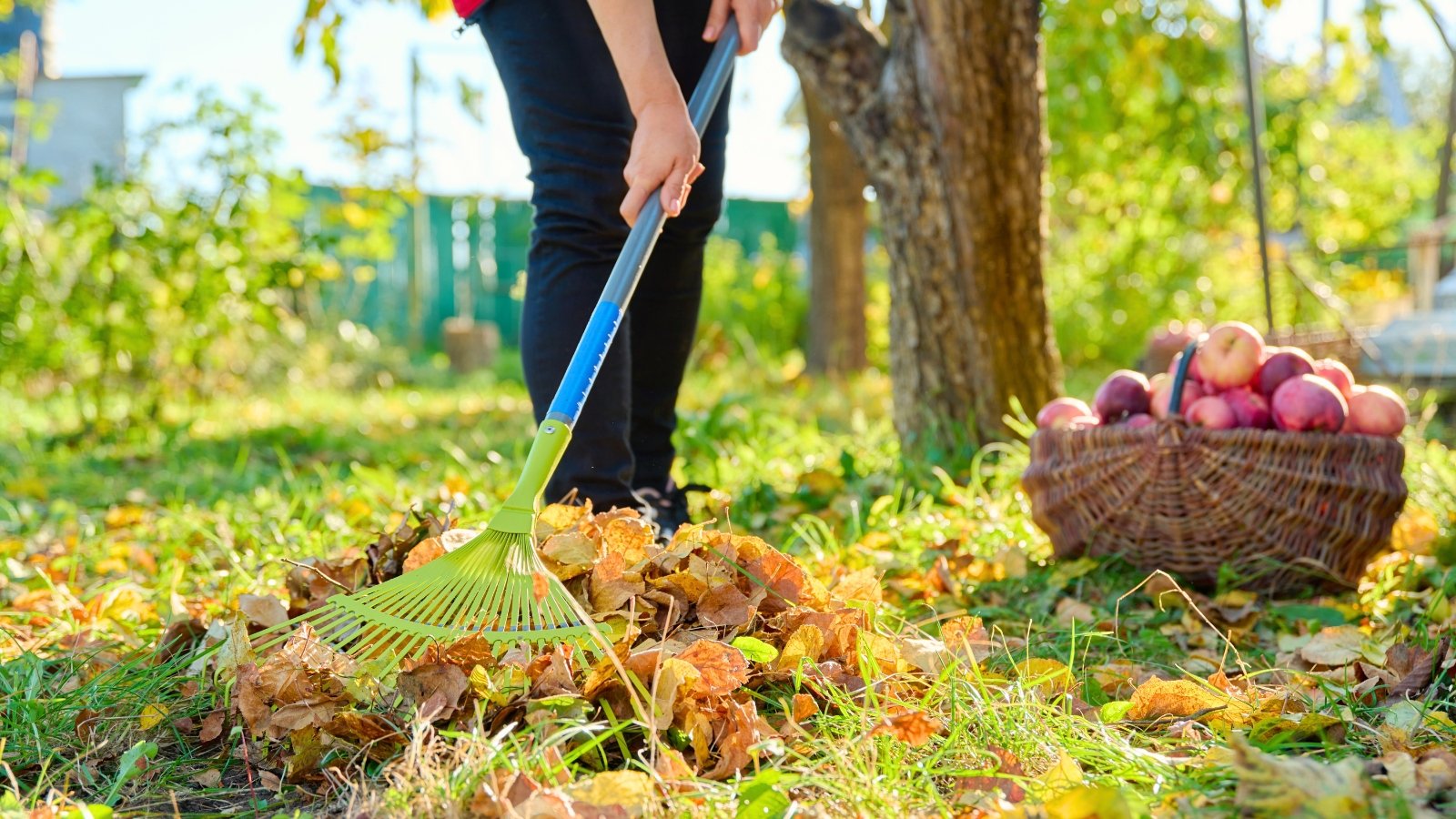
There are two schools of thought regarding handling the fallen leaves around the base of trees in autumn. If, in the realm of nature versus nurture, you tend to lean into nature, you may want to leave those leaves alone.
Letting the fallen leaves stay out has certain benefits for the tree. The leaves decompose and put nutrients back into the soil. This is what happens to deciduous trees in the wild, so in general, it’s beneficial.
If you feel that nurture is important to maximize the tree’s production and health, clean-up might be your preference. It’s not bad to do this; you can always go in later and top-dress the soil with other organic matter. This serves a similar purpose.
Leaving debris under your trees can lead to pests and diseases. Fungus loves to grow in leaf litter, so you could have issues if you have a rainy fall. Pests also like to nest in these piles. In situations where diseases have been present, it’s best to rake up the leaves.
You don’t have to dispose of healthy leaves if you want to clean up under your trees but don’t want to waste that good organic leaf compost. You can rake them into a pile in a separate space and apply them to your empty annual beds to feel the soil. They can also be composted.
Fertilizer and Soil Amendments
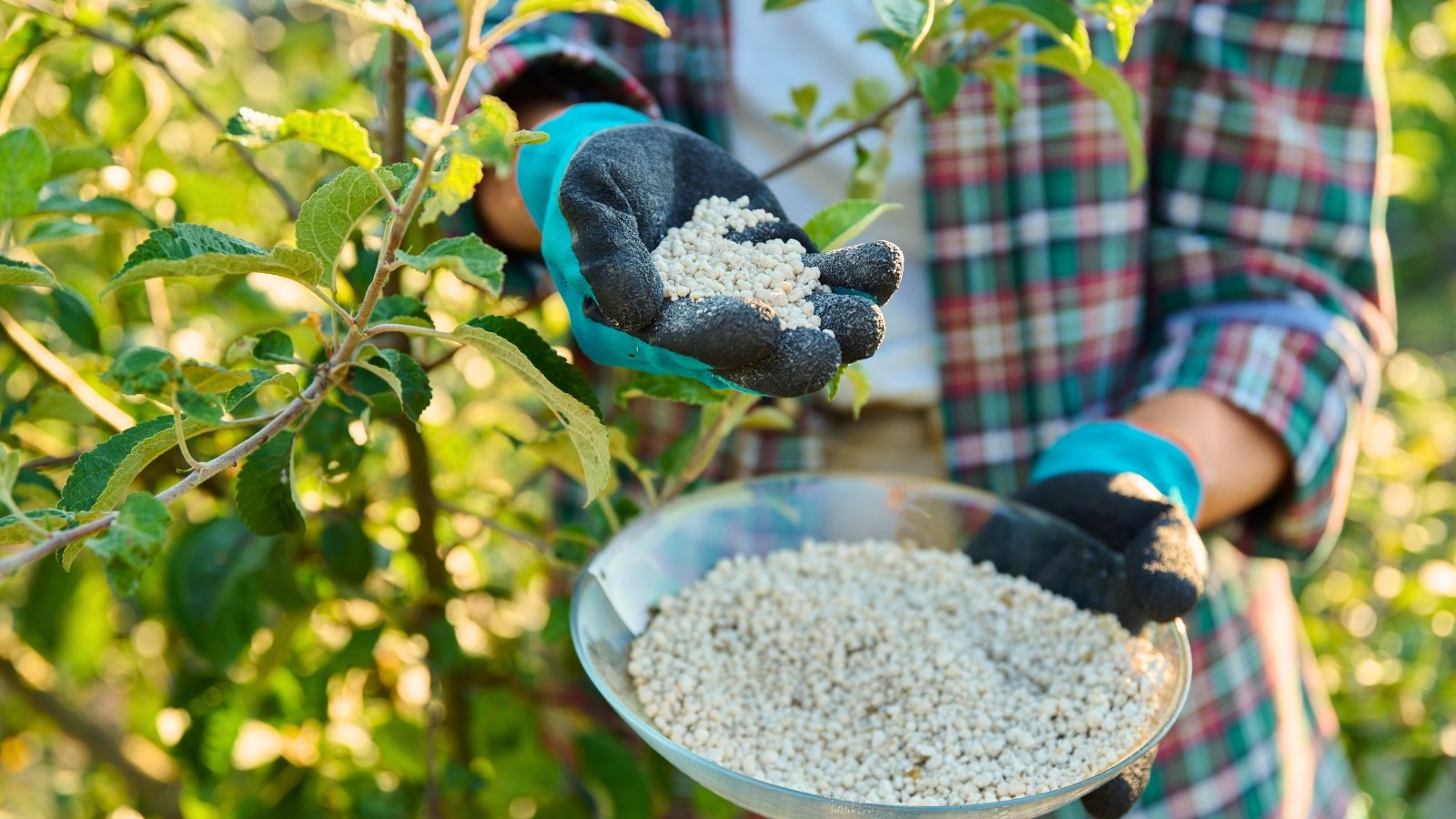
Fall fertilizing requires a nuanced approach. While this is a good time to use certain types of fertilizers or amendments, you should also avoid some. Certain trees require fertilizing in fall, and others don’t. Ensure you know the needs of your trees before fertilizing.
The main thing to avoid in autumn is nitrogen. Nitrogen will make your plant flush out with new growth. This new growth is tender and more susceptible to frost damage. You want your wood to be as mature as possible going into dormancy.
Other fertilizing and amending practices are perfectly fine at this time. Fall is a good time to perform a soil test to determine what is lacking and whether the pH is right. Correcting the pH will help your tree absorb the right nutrients.
Feel free to apply phosphorus and potassium fertilizer during this time, but use less than you would other times of the year. If your soil test shows that the soil lacks other nutrients like iron, magnesium, and zinc, this is a good time to amend the soil with those. Again, the type of tree matters here.
Organic compost or manure is the exception to the no-nitrogen rule. These amendments contain a significant amount of nitrogen, but they break down slowly.
It’s a great idea to top-dress the soil above your roots before winter. Just add a layer of organic material around the trunk out to the drip line. When the tree wakes up in spring, it will be ready for use.
Pruning
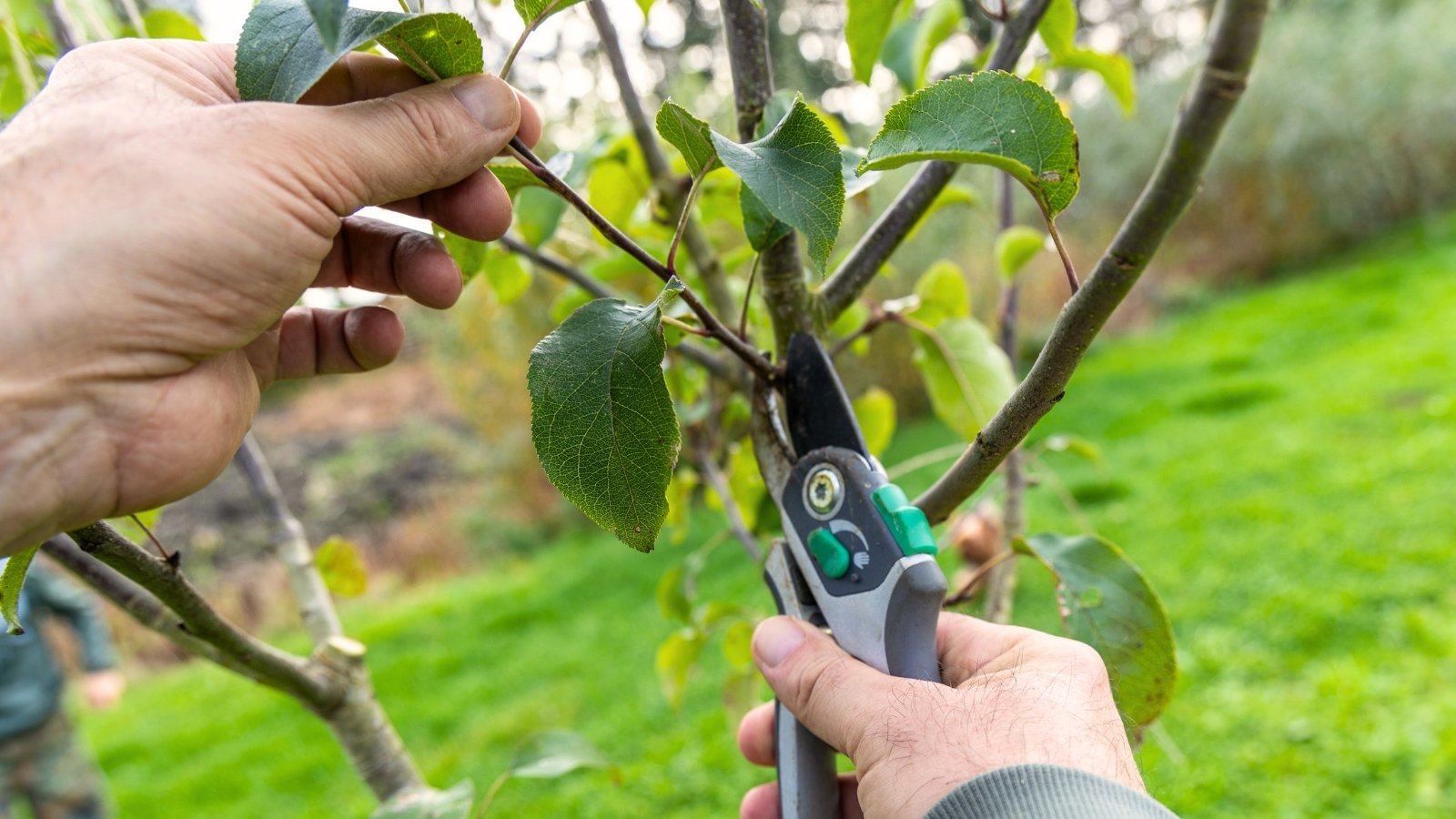
Pruning, like nitrogen-rich fertilizer, will also encourage new growth. We don’t want that in the fall because it makes that growth and the tree as a whole more vulnerable to the cold.
Trees do something really cool in the fall, which helps them grow the right way at the right time. In autumn, they actively draw nutrients from their leaves back into the trunk and roots, storing this energy for a flush of growth in spring.
Storing these nutrients in the trunk and roots helps the plant survive cold winter weather. Pruning now will do two things: it will remove many leaves and deprive the tree of those precious nutrients. It can also cause that flush of new, tender growth.
Both of these events will weaken the tree right before it has to survive freezing temperatures. Add reduced photosynthesis caused by shorter daylight hours, and that tree has much to contend with.
Reserve your major pruning for late winter or very early spring. Just before the tree breaks, dormancy is ideal. For now, just do a little cleaning up. Remove any dead or damaged branches. You can remove suckers at this time, too. Cut them off as close to the ground as possible.
Pest Control

Many pests die off in the winter, or they or their larvae overwinter in the soil. These can be controlled culturally through removal of debris. Inspect your foliage and branches for signs of pest infestation. If you’re concerned about insects overwintering in the bark, you can use a wash or dormant oil to treat the trunk and branches. These suffocate the insects and prevent a resurgence in the fall.
Staking and Support
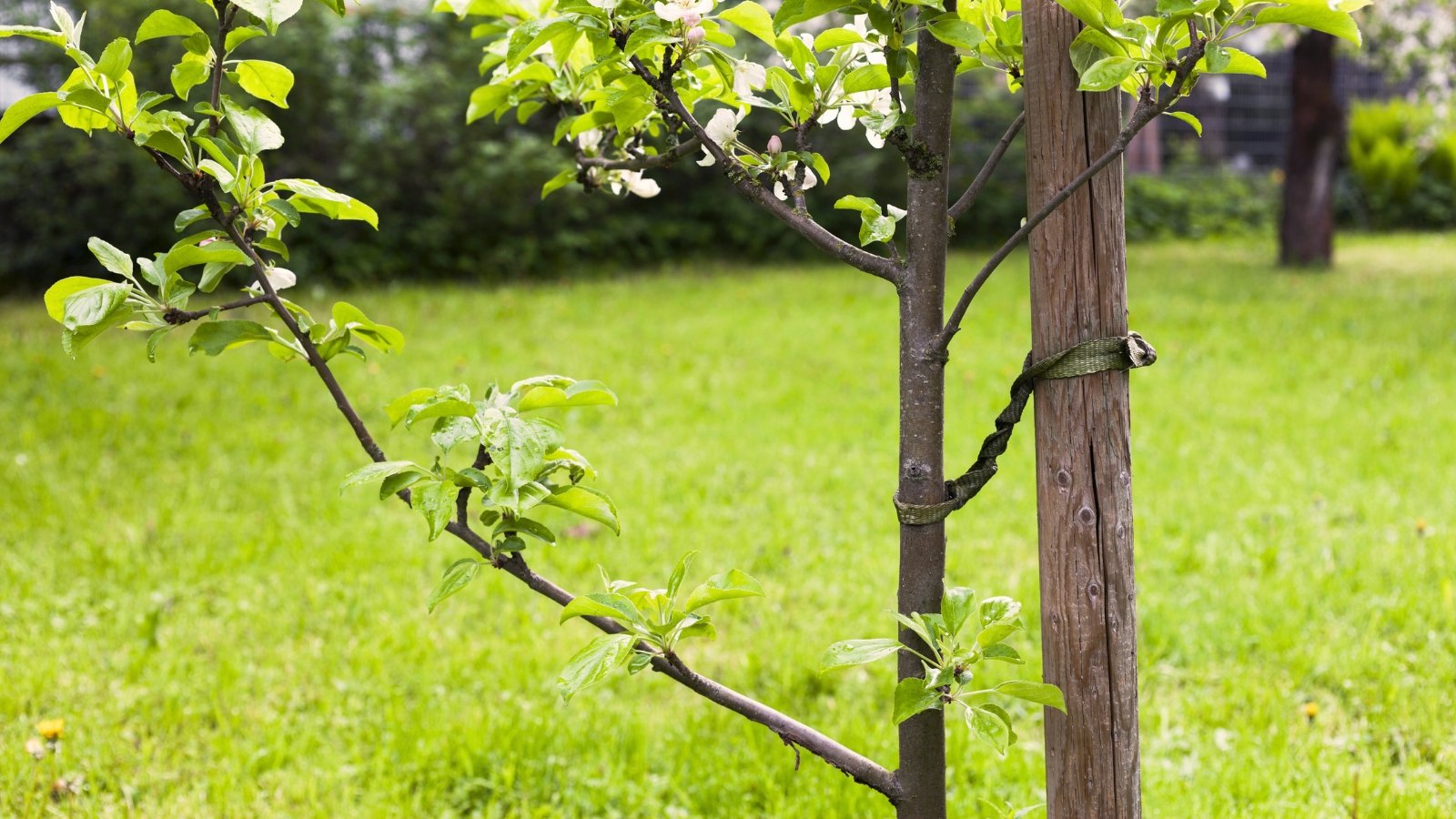
If you planted them properly, established trees shouldn’t need staking. In fact, it can be detrimental, causing weak root development. There are some conditions under which you should stake, though, so let’s go over them.
Newly planted trees, especially those with bare roots, need staking for this first winter. If your tree is leaning, that’s another reason to support it. This will help it right itself over the winter.
Sometimes, top-heavy trees, especially young ones, benefit from staking. Young trees will benefit from staking if you live in a windy area or one with loose or sandy soil. Mature, healthy specimens will not need this.
How to Do It:
- Find two or three stakes. They can be metal or wood. Press on the trunk using your hand to see if it rocks back and forth. If it does, it probably needs staking.
- Determine the prevailing wind direction and set the stakes to support the trunk on either side against the wind. If needed, a third stake can be used, but two will typically do the job.
- Secure the trunk to the stakes using a soft material, like tree straps or canvas strips. Pieces of an old hose can be used to secure the tree without cutting into it with wire. It should be able to sway naturally; don’t strap it down too tightly.
- In the spring, remove the stakes as you enter a new growing season. You can leave them on for another season if it doesn’t feel anchored. Just make sure your stakes don’t cut into the trunk.
Protection
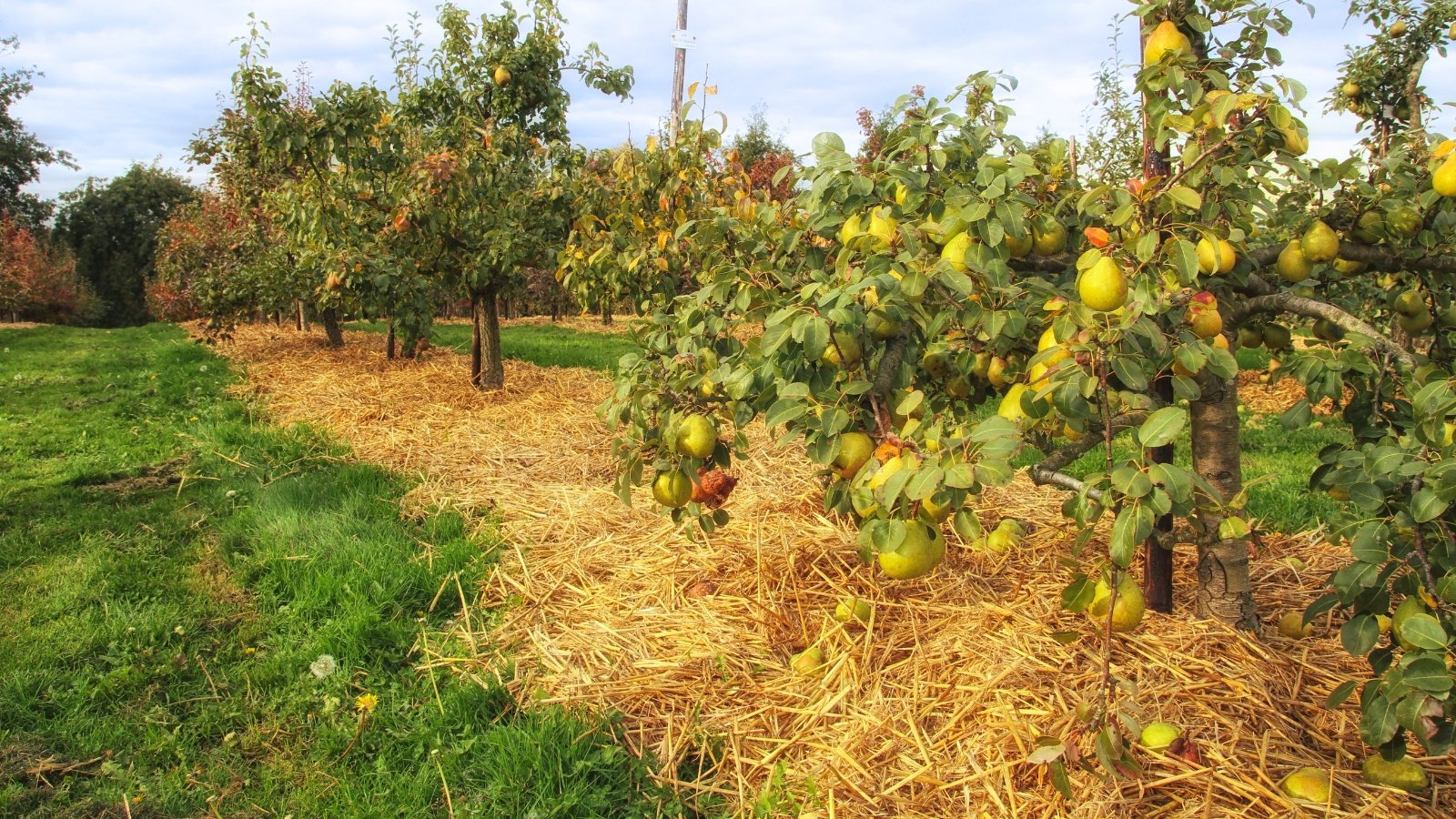
Mulch is nearly always a good idea when it comes to offering some extra protection from the cold. Applying a thick layer of mulch over the roots will insulate the soil, protecting the roots from extreme temperature fluctuations.
Mulch also feeds the soil. Over time, mulch breaks down and incorporates into the soil, adding organic material and nutrients that help feed the tree. Choose a mulch that doesn’t contain dye or other chemicals. I like to use pine bark mulch because it lowers the pH as it decays.
Young tree trunks can be susceptible to sun scald over the winter. Without their shading canopy, the sun is more intense on the bark. One way to protect the trunk is to paint it with a solution of one part white latex paint and one part water. This protects and reflects light.
Other, less permanent options include wrapping the trunk with aluminum foil or plastic guards. I don’t love the look of painted trees, so I opt for removable guards. Make sure to remove these in the spring so that insects don’t turn them into a breeding ground.
That’s all the protection your trees will need. Fruit trees that are hardy in your Zone shouldn’t need any further protection. Just be sure to choose cultivars that perform well in your climate, and they should be blooming again in no time!
Key Takeaways
Preparing your fruit trees for winter will help them support a healthy harvest in the coming year. By giving them a little attention now, you can do a lot of good. Well-cared-for trees develop strong roots, and strong roots make strong plants.





